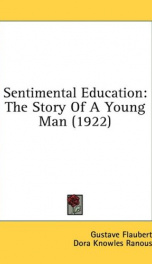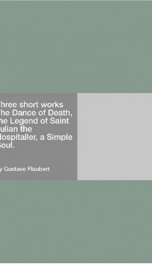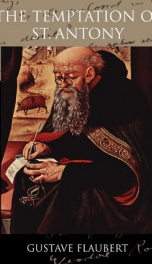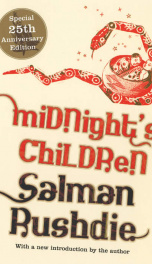Flaubert Gustave

Amantine Aurore Lucile Dupin, later Baroness (French:baronne) Dudevant (1 July 1804 – 8 June 1876), best known by her pseudonym George Sand (French pronunciation: [ʒɔʁʒ sɑ̃d]), was a French novelist. She is considered by some a feminist although she refused to join this movement. She is regarded as the first French female novelist to gain a major reputation.[1] Sand's father, Maurice Dupin, was a distant relative of Louis XVI and grandson of the Marshal General of France, Maurice, Comte de Saxe, himself an illegitimate son of August the Strong, King of Poland and a Saxon elector.[2] Sand's mother, Sophie-Victoire Delaborde, was a commoner. Sand was born in Paris but raised for much of her childhood by her grandmother, Marie Aurore de Saxe, Madame Dupin de Franceuil, at her grandmother's estate, Nohant, in the French region of Berry (See House of George Sand). She later used the setting in many of her novels. It has been said that her upbringing was quite liberal. In 1822, at age 19, she married Baron Casimir Dudevant (1795–1871), illegitimate son of Baron Jean-François Dudevant. She and Dudevant had two children: Maurice (1823–1889) and Solange (1828–1899). In early 1831 she left her prosaic husband and entered upon a four- or five-year period of "romantic rebellion." In 1835 she was legally separated from Dudevant and took her children with her. Sand's reputation came into question when she began sporting men's clothing in public — which she justified by the clothes being far sturdier and less expensive than the typical dress of a noblewoman at the time. In addition to being comfortable, Sand's male dress enabled her to circulate more freely in Paris than most of her female contemporaries could, and gave her increased access to venues from which women were often barred — even women of her social standing. Also scandalous was Sand's smoking tobacco in public; neither peerage nor gentry had yet sanctioned the free indulgence of women in such a habit, especially in public (though Franz Liszt's paramour Marie D'Agoult affected this as well, smoking large cigars). These and other behaviors were exceptional for a woman of the early and mid-19th century, when social codes—especially in the upper classes—were of the utmost importance. As a consequence of many unorthodox aspects of her lifestyle, Sand was obliged to relinquish some of the privileges appertaining to a baroness — though, interestingly, the mores of the period did permit upper-class wives to live physically separated from their husbands, without losing face, provided the estranged couple exhibited no blatant irregularity to the outside world. Poet Charles Baudelaire was a contemporary critic of George Sand: "She is stupid, heavy and garrulous. Her ideas on morals have the same depth of judgment and delicacy of feeling as those of janitresses and kept women.... The fact that there are men who could become enamoured of this slut is indeed a proof of the abasement of the men of this generation."[3] Sand conducted affairs of varying duration with Jules Sandeau (1831), Prosper Mérimée, Alfred de Musset (summer 1833 – March 1835), Louis-Chrystosome Michel, Pierre-François Bocage, Félicien Mallefille and Frédéric Chopin (1837–47).[4] Later in life, she corresponded with Gustave Flaubert. Despite their obvious differences in temperament and aesthetic preference, they eventually became close friends. She was engaged in an intimate friendship with actress Marie Dorval, which led to widespread but unconfirmed rumors of a lesbian affair.[5] Letters written by Sand to Dorval mentioned things like "wanting you either in your dressing room or in your bed." In Majorca one can still visit the (then abandoned) Carthusian monastery of Valldemossa, where she spent the winter of 1838–39 with Chopin and her children.[6] This trip to Majorca was described by her in Un Hiver à Majorque (A Winter in Majorca), published in 1855. Chopin was already ill with incipient tuberculosis at the beginning of their relationship, and spending a winter in Majorca - where Sand and Chopin did not realize that winter was a time of rain and cold, and where they could not get proper lodgings - exacerbated his symptoms. They split two years before his death, for a culmination of reasons. Sand's insecurities at forty probably contributed to her boredom and sexual poverty with Chopin. In her book, "Lucrezia Floriani", Sand used Chopin as a model for a sickly Eastern European prince named Karol. He's cared for by a middle-aged actress past her prime, Lucrezia, who suffers a great deal by caring for Karol. [7]Though Sand claimed not to have made a cartoon out of Chopin, the book's publication and widespread readership may have exacerbated their apathy to each other. However, the tipping point in their relationship involved her daughter, Solange. Chopin continued being cordial with her after she and her husband, Auguste Clesinger, had a vicious falling out with Sand over money. Sand took Chopin's lending a hand to Solange as outright treachery, and confirmation that Sand had always "loved" Solange[8]. Sand's son, Maurice, also disliked Chopin and wanted to establish himself more as the man of the estate. Chopin was never asked back to Nohant. In 1848, he returned to Paris from a tour of the UK and died at the Place Vendome. Penniless, his friends paid for his stay there, and his funeral at the Madeleine. The event, with over 3,000 people attending including Delacroix, Liszt, Victor Hugo and other, did not see George Sand attend. A liaison with the writer Jules Sandeau heralded her literary debut. They published a few stories in collaboration, signing them "Jules Sand." She consequently adopted, for her first independent novel, Indiana (1832) , the pen name that made her famous – George Sand.[9] Her first published novel, Rose et Blanche (1831), was written in collaboration with Jules Sandeau. Drawing from her childhood experiences of the countryside, she wrote the rural novels La Mare au Diable (1846), François le Champi (1847–1848), La Petite Fadette (1849), and Les Beaux Messieurs Bois-Doré (1857). A Winter in Majorca described the period that she and Chopin spent on that island in 1838-9. Her other novels include Indiana (1832), Lélia (1833), Mauprat (1837), Le Compagnon du Tour de France (1840), Consuelo (1842–1843), and Le Meunier d'Angibault (1845). Further theatre pieces and autobiographical pieces include Histoire de ma vie (1855), Elle et Lui (1859) (about her affair with Musset), Journal Intime (posthumously published in 1926), and Correspondence. Sand often performed her theatrical works in her small private theatre at the Nohant estate. In addition, Sand authored literary criticism and political texts. Sand wrote many essays and published works establishing her socialist position. It is believed that because of her early life, she sided with the poor and working class because of this. When the Revolution started in 1848, women had no rights and Sand believed these were necessary for progress. Around this time Sand started her own newspaper which was published in a workers co-op. [10]This allowed her to publish more political essays. She wrote "I cannot believe in any republic that starts a revolution in killing its own proletariat." Her most widely used quote is "There is only one happiness in life, to love and be loved." She was known well in far reaches of the world, and her social practices, her writings and her beliefs prompted much commentary, often by other luminaries in the world of arts and letters. A few excerpts demonstrate much of what was often said about George Sand: George Sand died at Nohant, near Châteauroux, in France's Indre département on 8 June, 1876, at the age of 71 and was buried in the grounds of her home there. In 2004, controversial plans were suggested to move her remains to the Panthéon in Paris. Frequent literary references to George Sand can be found in Possession (1990) by A. S. Byatt. The American poet Walt Whitman cited Sand's novel Consuelo as a personal favorite and the sequel to this novel La Comtesse De Rudolstady contains at least a couple of passages that appear to have had a very direct influence on him. Elizabeth Barrett Browning (1806-1861), the English poet, produced two poems "To George Sand: A Desire" and "To George Sand: A Recognition". The character, Stepan Verkhovensky, in Dostoevsky's novel The Possessed took to translating the works of George Sand in his periodical, before the periodical was subsequently seized by the ever-cautious Russian government of the 1840s. George Sand is referenced a number of times in the play Voyage, the first part of Tom Stoppard's The Coast of Utopia trilogy. And, in the first episode of the "Overture" to Swann's Way - the first novel in Marcel Proust's In Search of Lost Time sequence - a young, distraught Marcel is calmed by his mother as she reads from François le Champi, a novel which it is explained was part of a birthday package from his grandmother which also included La Mare au Diable, La Petite Fadette, and Les Maîtres Sonneurs. As with many episodes involving art in À la recherche du temps perdu, this reminiscence includes commentary on the work. George Sand also makes an appearance in Isabel Allende's Zorro, going still by her given name, as a young girl in love with Diego de la Vega (Zorro).
do you like this author?
What readers are saying
What do you think? Write your own comment on this book!
write a commentWhat readers are saying
What do you think? Write your own comment on this author!
write a commentBook list

Sentimental Education,Volume IIThe History of a Young Man
Series:
Unknown
Year:
Unknown
Raiting:
4.5/5
Show more
add to favoritesadd In favorites

The Temptation of St. Antonyor A Revelation of the Soul
Series:
Unknown
Year:
Unknown
Raiting:
3.5/5
Show more
add to favoritesadd In favorites

Bouvard and PécuchetA Tragi-comic Novel of Bourgeois Life
Series:
Unknown
Year:
Unknown
Raiting:
3/5
Show more
add to favoritesadd In favorites

Three Short Works
The Dance of Death,the Legend of Saint Julian the Hospitaller,a Simple Soul
Series:
Unknown
Year:
Unknown
Raiting:
3/5
Show more
add to favoritesadd In favorites

Over Strand and Field
A Record of Travel through Brittany
Series:
Unknown
Year:
Unknown
Raiting:
4/5
Show more
add to favoritesadd In favorites

Three short worksThe Dance of Death,the Legend of Saint Julian the Hospitaller,a Simple Soul.
Series:
Unknown
Year:
Unknown
Raiting:
4.5/5
Show more
add to favoritesadd In favorites

sentimental education the story of a young man
Series:
Unknown
Year:
Unknown
Raiting:
4/5
Gustave Flaubert went down to the world literature as the creator of objective novel. The author stands out as an impartial observer, avoiding giving his appraisals and opinions, and “Sentimental Education” is a remarkable example of such work. The protagonist, trying to make a carrier and realize his capabilities, wants and can love. But the chosen one is married; and all his undertakings – writing, painting and jurisprudence - remain just in their infancy. Flauber creates a vivid picture of the Lost Generation, the generation of people, disillusioned and trying to find their way in life.
Show more
add to favoritesadd In favorites

Three short works
Series:
Unknown
Year:
Unknown
Raiting:
1.5/5
Three Short Works is a collection of three short stories by Gustave Flaubert. Includes "The Dance of Death," "The Legend of Saint Julian the Hospitaller," and "A Simple Soul."
Show more
add to favoritesadd In favorites

The Temptation of St. Antony
Series:
Unknown
Year:
Unknown
Raiting:
4.5/5
Gustave Flaubert was a famous French novelist, whose literary heritage counts numerous works of love and passion. However “The Temptation of St. Antony”, a work of all his life, as he used to say, is his lesser known work, even to the French readers. In this book the author applies to the theme of philosophy, religion and sin. He discourses, with his inherent skill, on objective reality, existence and nonexistence, God and the absolute, form and substance. The more we learn, the more questions arise.
Show more
add to favoritesadd In favorites
What readers are saying
What do you think? Write your own comment on this author!
write a commentif you like Flaubert Gustave try:
readers also enjoyed
What readers are saying
What do you think? Write your own comment on this author!
write a commentGenre
if you like Flaubert Gustave try:
readers also enjoyed
Do you want to read a book that interests you? It’s EASY!
Create an account and send a request for reading to other users on the Webpage of the book!



















